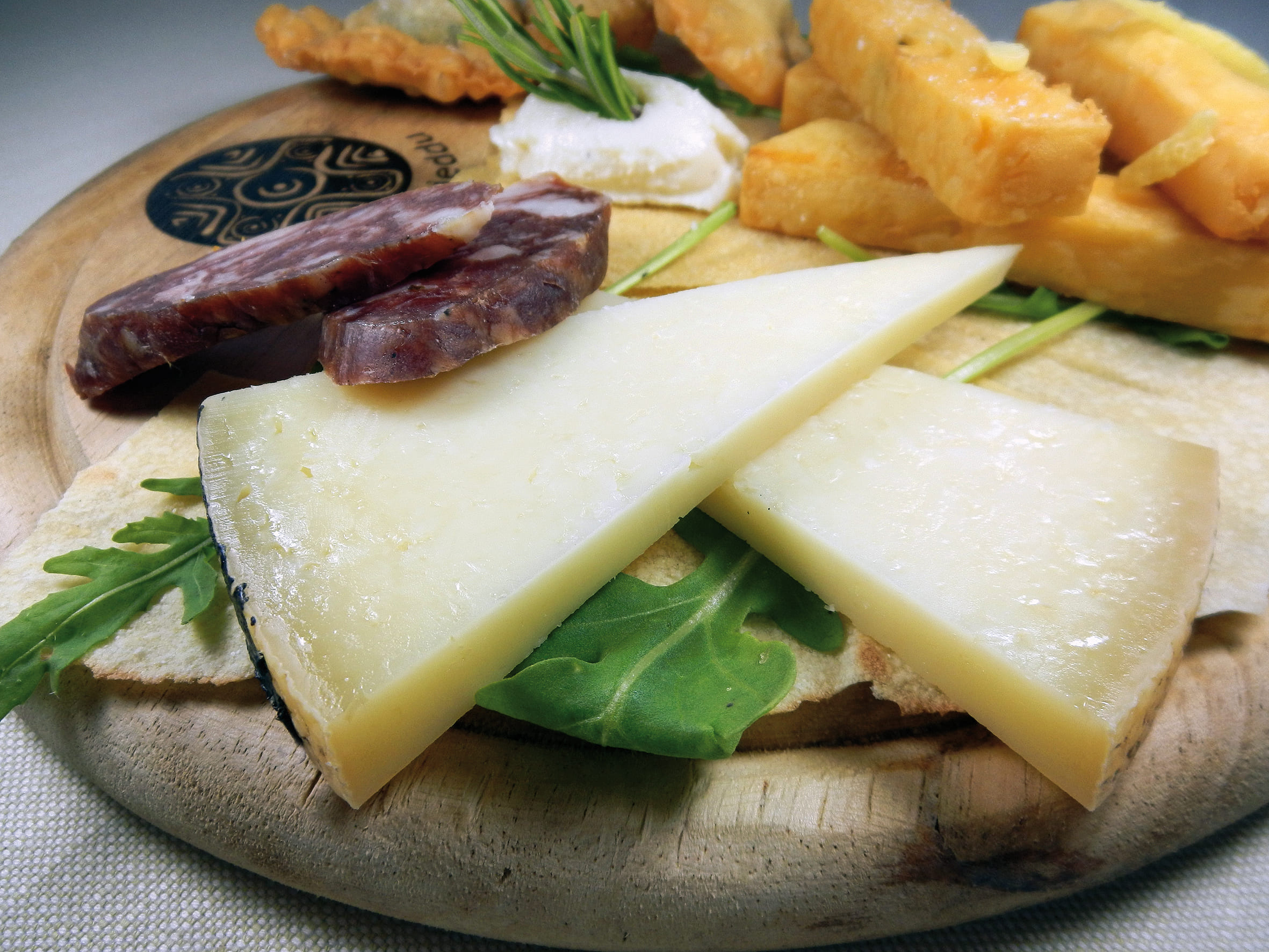Our island holds some of the most famous and prized ancient flavours of the whole island. Sardinian cuisine is still characterised by strong, simple flavours with clear ties to the territory. The ingredients of the cuisine are genuine and come from the hard work of farmers and shepherds, while the recipes come from the skilful hands of grandmothers and old ladies who hand down the secrets of cooking to their children and grandchildren every day. In Sardinia, it will be very easy to eat culinary specialities in restaurants, agritourisms, but also at festivals and food and wine events, so don’t worry you will certainly get to know this delicious island heritage. Below we suggest some typical dishes and products to taste during an autumn trip to Sardinia East Land.
The good wine of Sardinia: from Cannonau to Mandrolisai DOC
Speaking of wines, it is certainly the reds that are the mainstay in central eastern Sardinia. Of all of them, Cannonau, the most famous even outside the island, has a full-bodied and decisive flavour and an important alcohol content. It is grown all over the island, but it is in Barbagia, particularly in the area of Mamoiada and Oliena, that it is at its best. In fact, here Cannonau grapes are used to produce DOC red and rosé wines of excellent quality that are recognised nationally and beyond. Another very important Cannonau production site is Jerzu, in Ogliastra, where a wine festival is also organised every year. Barbagia also produces IGT-certified wines of different types and alcoholic degrees such as Barbagia bianco, Barbagia novello, Barbagia rosato and Barbagia rosso frizzante.
Moving instead to the Mandrolisai region, the Mandrolisai DOC wine is produced whose name strongly recalls the link with the territory. It is a ruby red wine with a pleasant aroma and a savoury flavour with a bitter aftertaste. Excellent with red meats and cheeses while to accompany dessert we recommend Moscato di Sardegna, produced throughout the island, is a very sweet liqueur wine with a fruity taste and high alcohol content.
Fiore Sardo DOP and Pecorino DOP, the Sardinian cheeses par excellence
Fiore Sardo PDO is an uncooked hard cheese made from the milk of Sardinian sheep. Its production has very ancient origins and is closely linked to the territory of central Sardinia and, in particular, to Gavoi where the milk was poured into flower-shaped wooden moulds, giving it the name Fiore Sardo. Gavoi is a very important centre for this cheese, so much so that it houses the Fiore Sardo Museum, which we recommend you visit to learn about the history of this high-quality Sardinian production. Pecorino DOP is the cheese that best identifies Sardinia, with its intense flavour that always gives that extra edge to the dishes in which it is added. However, we recommend you try Pecorino and Fiore Sardo also melted over a nice slice of Pistoccu bread. An unforgettable treat!
Traditional recipes: typical breads and handmade pasta
Bread is one of the most important gastronomic arts in Sardinia. Every area, even every village, has its own recipe that has been handed down from generation to generation. In Sardinia’s East Land, one of the most famous and typical breads is certainly the pane carasau. This bread is characterised by very thin, crispy disks that are baked twice; this double baking gives it a long shelf life, which was necessary in the past during the absence of the shepherds who left for the transhumance. As we said, however, each country has its own bread recipe and so it becomes pane lentu when it is softer or pane ‘ine when it is even finer and guttiau when it is enriched with oil and salt. Bread carasau is also the basis of pane frattau, a typical dish, characterised by sheets of bread soaked in sheep’s broth with tomato sauce and pecorino cheese. To complete the dish, a poached egg is placed on top. In Ogliastra, on the other hand, Su Pistoccu is typical, a hard sheet bread that keeps for months and whose ingredients are semolina, flour, water, salt and yeast. It can be eaten dry and crunchy or softened with water and good pecorino cheese. Su Coccoi, on the other hand, is a prized bread from which derive all the decorated breads widespread on the island prepared for important occasions such as weddings, religious festivals and anniversaries.
Stuffed pasta is still a very important dish in the Sardinian culinary tradition. As with bread, each town has its own recipe and its own particularity, but of all the Culurgiones (or Culurgionis) of Ogliastra are certainly the most important, also because they are PGI-certified. Their shape is reminiscent of an ear of wheat and if you happen to see them being prepared, you will realise that it is like watching a dance. The filling is potato mint and local cheese and is usually served with a sauce of fresh tomatoes and basil. Today, innovation in the kitchen has led to the emergence of culurgiones with increasingly imaginative fillings cooked in non-traditional ways; try them in this modern key and you will not regret it. With the first cold autumn weather comes a craving for soups and in this case you must try su Filindeu, typical of the Nuoro area. The processing of this pasta, which means ‘God’s threads’ in Italian, is also mesmerising; there are few pasta factories in Sardinia that still make them by hand, dividing the dough in two and pulling and joining the ends together to obtain many thin threads of pasta. Once dried, this pasta is placed in sheep’s broth and seasoned with fresh pecorino cheese. A rare dish that warms the heart.

